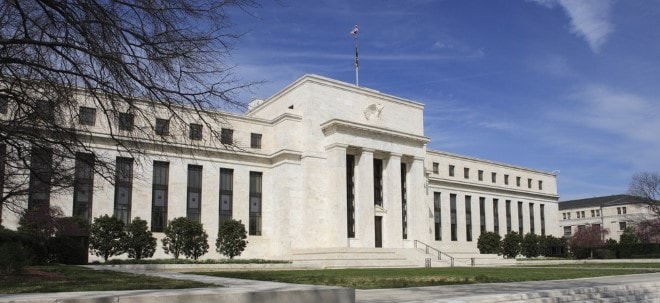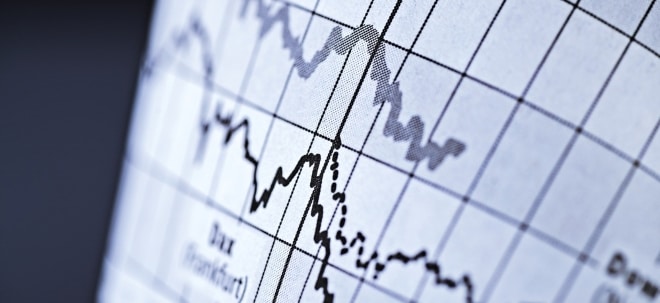Die Zahl der Euro-Long-Positionen bei den "non-commercial" Traders (Hedgefonds, Spekulanten etc.) ist so hoch wie seit November 2004 nicht mehr (siehe Reuters, unten). Damals stand EUR/USD bei 1,30. Es ging dann zwar noch ein paar Cents höher bis 1,35, doch dann folgte der unvermeidliche Absturz auf 1,20.
Jetzt kommmt dieser Euro-Long-Erwartung der in Frankreich drohende Generalstreik gegen die neuen Arbeitsmarktsgesetze in die Quere.
Dies ist ein Bilderbuch-Setup für einen Euro-Absturz bis auf unter 1,20.
Woll'n ma sehn, ob's klappt...
Dollar gets battered but "Armageddon" not here yet
REUTERS
Fri Mar 17, 2006 2:18 PM ET
By Jamie McGeever - Analysis
NEW YORK (Reuters) - The dollar has experienced bouts of selling in recent months and emerged the stronger, but a host of factors conspiring against the greenback suggest the extent of this week's sell-off may be different.
A dramatic downshift in financial markets' expectations on how high U.S. interest rates will go, some soft U.S. economic data, a break of key technical support levels and notable shifts in the options market against the dollar slammed the greenback down to six-week lows.
The big question in currency markets now is whether this signals the dollar's resumption of its structural, long-term decline.
Most market participants appear reluctant to make quite so bold a prediction. But they do recognize that the dollar selling momentum generated by the confluence of factors mentioned above is unlike anything seen for some time.
"This is most serious assault on the dollar since January," said Steven Englander, chief currency strategist for the Americas at Barclays Capital in New York. "This feels different."
Driven largely by the hefty shift lower in U.S. rate expectations, the dollar is poised to record its biggest weekly decline against the euro and a basket of currencies since the first week of January.
A week ago, interest rate futures markets were fully pricing in the Federal Reserve raising rates to 4.75 percent later this month, and a one in four chance it would raise to 5.25 percent by the middle of the year.
Now, however, markets have taken all bets of a hike beyond 5 percent off the table, and are pricing in only a three in four chance the Fed will even reach 5 percent.
[Das Einzige, was passiert ist, ist dass die CPI-Zahlen (Consumer Price Index) nur um 0,1 % statt 0,2 % gestiegen sind. Das hört sich dramatisch an - 50 % Differenz! Tatsache jedoch ist: Die US-Inflation inkl. Energie betrug über das letzte Jahr insgesamt 3,5 %. Da sind die 0,1 % monatliche Differenz fast vernachlässigbar - ein statistisches Rauschen im Walde. Auch an der Zinsfront hat sich nicht wirklich etwas verändert. Zurzeit ist bei 5,00 % der Deckel drauf; die Chance, dass die 5 % im Juni kommen, ist aber immer noch 3 zu 1 dafür - A.L.]
This helped compress the spread between two-year U.S. and euro zone government debt to its narrowest level in favor of the dollar in 10 months.
Commerzbank currency strategists don't think that is enough to prompt a market "sea change" against the dollar, but they do think that will happen when it becomes clear that U.S. interest rates are no longer supportive for the greenback.
"We are not at that stage yet and it is unclear whether we will be," they wrote in a research note.
DOLLAR'S DOG DAYS
David Gilmore, partner at FX Analytics in Essex, Connecticut, goes further and argues that the dollar won't face its "Armageddon Day" until U.S. economic weakness forces the Fed to actually start cutting rates.
Still, "the dollar has broken significant levels and has plenty of scope to run lower in the next six weeks," he said.
To be sure, currency options markets firmly believe the dollar will lose more ground in the coming weeks, particularly against the euro.
Risk reversals on one-week euro/dollar options, which measure the options market's bias toward call or put options in a currency, spiked up this week to their highest levels in favor of euro calls since November 2004.
Then, the euro was trading around $1.3000 and on its way to a record high above $1.35 a few weeks later.
[Das hohe Put-Call-Verhältnis im Nov. 2004 war auch damals ein perfekter Kontraindikator, kurz nach dem Peak ging es abwärts in Richtung 1,20 - A.L.]
A call option gives an investor the option to buy an asset at a certain price at a predetermined time -- effectively a bet the currency will rise in value over a given time-frame -- while a put option is a bet it will depreciate.
Similarly, the dollar's technical picture deteriorated markedly this week. The dollar broke significantly below its 200-day moving average against a basket of major currencies and the euro broke above its 200-day moving average against the dollar.
However, the dollar would have to slide even further to break out of broad ranges and convince some analysts its technical outlook is bleak enough to warrant calling it the start of a long-term downtrend.
Matthew Kassel, currency strategist at IDEAGlobal in New York, reckons the euro would have to break above $1.2285 -- it's currently around $1.2200 -- to attract longer-term institutional and fund buyers, while others point to the 2006 high around $1.2330 struck in January as the key target.
Yet there are signs that longer-term hedge funds and "real money" investors this week have already emerged to place their bets against the dollar.
"It certainly looks like it (the euro's rise) can last a little longer, and I think there will be genuine interest to join the move or add to positions on pullbacks," said Scott Ainsbury, portfolio manager at FX Concepts, a hedge fund in New York. |


 Thread abonnieren
Thread abonnieren


